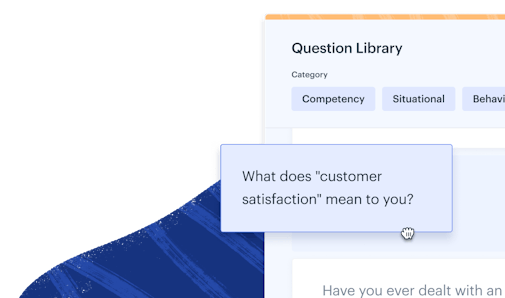The Right (and Wrong) Way to Outsource Customer Support


I know what you’re thinking 23 minutes into your call center experience:
I wish I could wait on hold a little longer so I can hear this not-quite-copyright-infringing version of a Celine Dion song again.
Perhaps not, but that’s what outsourced customer support means to many of us: A drawn-out conversation with a series of overworked, under-informed, and disempowered people you can barely hear over the noise of the call center.
Here at Help Scout, we’re vocal about our belief in truly helpful human-powered support — surely outsourcing is the polar opposite?
Not always. It is possible for external support reps to deliver high-quality experiences to your customers.
There's more than one kind of outsourcing
Business Process Outsourcing is a big industry, with a market size of $131 billion in the U.S. alone.
Companies outsource work of all types, not just customer service. Perhaps your own company outsources payroll processing or health care services, for example.
When there is work that can be done more efficiently or effectively by a third party, or you simply don’t have the staff or budget to hire a dedicated resource, outsourcing can be a cost-effective solution.
Outsourced support doesn’t have to mean super cheap, script-driven call centers. Other options are available that position themselves as remote partners or flexible extensions of your own team.
To understand how it all works, I spoke to the leaders of four such providers about their business models and their approaches to external customer service:
Sarah Hatter, founder at CoSupport: “Expert customer support help by people who love people.”
Shervin Talieh, founder at PartnerHero: “Remote, integrated teams for growing companies.”
Alex Holmes, CMO at Influx: “Customer service as a service.”
David Sudolsky, founder at Boldr: “A purpose driven outsourcing company.”
I also spoke to two of their potential customers, support team leaders who are using or considering customer service outsourcing:
Kailee Urban, Director of Customer Support at FullStory
Matt Searle, Customer Success Operations Manager at Vend
I needed answers to two key questions:
Why would you outsource any of your customer service, and how can it be done well?
When does outsourcing customer support make sense?
When you have a growing global customer base
When a business begins to experience a growing global customer base , outsourcing support can be a way to provide responsive, high-quality service in customer-respective business hours while you figure out a long-term internationalization plan..
Kailee Urban is the Director of Customer Support at FullStory, and she has recently considered outsourcing some of her team’s support. For Urban, it’s important that all of her support hiring decisions be well informed — and to not just default to hiring internally.
There’s a stigma against outsourcing support, but it’s important to have the conversation.
Kailee Urban
When faced with the need to quickly hire and ramp up a global support team, Kailee began investigating all potential solutions, including outsourcing. In order to make the right decision for her existing team and customers, she began by mapping the full work output of the FullStory support team — not only what questions they answer, but also the work they do outside of the support queue.
With a complete picture of what her team does, she was able to determine if outsourcing was the right decision for scaling an international team. : “If you have a clear understanding of your support team’s impact, in and out of the support queue, and you find someone outside your organization can quickly have the same impact, you should consider that option.”
For Urban, outsourcing was never about saving money or sidelining support. Instead, it represented a way of adding support capacity quickly without committing to several full-time hires.
When you need to increase (or decrease) support coverage quickly
For businesses with seasonal cycles like ecommerce, support volume can vary widely throughout the year. Outsourced support teams allow for scaling the team size up and down as needed without over-hiring or having to let people go when the queues are quiet.
Even if you intend to hire internally, the process of finding applicants, interviewing, and onboarding can take months. Shervin Talieh, founder at PartnerHero, helps a number of his clients manage varying support loads:
When startups undergoing incremental growth know their baseline processes and metrics well, hiring in-house is an excellent option. But when they are facing growth at a pace and scale they are not set up for or familiar with, PartnerHero can provide a great solution.
Shervin Talieh
Instead of being short-term hires for a single client, PartnerHero’s support agents are reassigned to other clients when the need arises so they have the opportunity to build their skills and get career variety without job hopping. Talieh says:
“Rather than just providing ‘bodies,’ we learn what each company is facing at that moment and where they want to get to. Next, we assign a team of our employees to work exclusively with them. During onboarding, we look for process reengineering, policy, or systems changes that can help stabilize the company's operations.”
That ability to go beyond answering questions to really improving your business is a second reason to consider outsourcing.
When you’re inexperienced or just starting out
At CoSupport, Sarah Hatter offers a support audit and consulting in addition to direct customer service outsourcing. She says:
We teach them everything from how to determine when to hire someone internally, how to put the right processes and systems in place, how to choose the right tools, how to triage and assign tickets, and how to build a knowledge base.
Sarah Hatter
Similarly, while David Sudolsky doesn’t offer support consulting at Boldr, he finds that for many clients, working with his support agents is a shortcut to learning how a professional support team operates.
Often company founders have never run a support organization and don’t know how to set up processes, what tools to use, or even what great customer service looks like.
David Sudolsky
Whether engaging a consultant like CoSupport or just by observing experienced outsourced agents, new teams can gain a better understanding of how they want their internal support team to work.
When you want to improve your support coverage
At Vend, Matt Searle works with a busy internal support team that is already achieving great results, so outsourcing support was a means of maintaining consistent levels of coverage during the day.
We looked at our reports and stats, and there were some gaps where we just didn’t have enough people working in support.
Matt Searle
Searle partnered with Influx to provide support coverage during specific periods of the day and week, which brought down the first response time considerably for customers during those windows. The output of the external staff is carefully monitored so that Vend’s service quality is maintained.
CMO Alex Holmes says that Vend is a great example of how Influx works best as:
an extension of the internal support team, not as a replacement for internal customer service.
Vend’s support questions can be complex, and maintaining high-quality service meant Influx agents needed thorough, ongoing, in-depth training, and they continue to work closely with Vend’s internal team.
When outsourcing isn’t a good fit
Outsourcing is not appropriate in every situation. Across all of the conversations I had for this article, there were a few repeat examples.
Don’t outsource support just to lower costs
It is true that the per hour (or per customer interaction) costs will typically be lower than an internal hire. However, hiring small numbers of well-trained outsourced agents isn’t the cheapest possible option. The very low cost BPO providers are targeted at much larger companies with much higher volumes of repetitive support requests.
Don’t outsource to avoid thinking about customer service
Outsourcing isn’t a way to hand off support to someone else and wash your hands of it. A successful outsourcing arrangement is a partnership that requires work on both sides. Communicate regularly, continually train, review quality, and work with your external provider to get the most out of your investment in them.
Customer Support Hiring Calculator
See how changes in your customer growth, ticket volume, and self-service uptake affects your customer support hiring needs.
Start Calculating
The 9 keys to successful support outsourcing
The experience your customers have when they come to you for help is a huge part of your company brand. So if you’re considering outsourcing some of that support, it’s vital to do it well.
Matt Searle at Vend has trialled a couple of different support outsourcing services. The first service he tried was not a good fit for Vend’s support needs, which resulted in some customer conversations that the internal team needed to jump in and “rescue.”
Since moving to Influx, both the Vend team and their customers have enjoyed a high level of service without the support coverage gaps that used to occur.
The following suggestions are a combination of lessons learned by McCormack and Searle and recommendations from CoSupport, Influx, PartnerHero and Boldr on how a company can have a smooth, effective customer support outsourcing experience.
1. Make sure you have buy-in from the top
Making outsourcing work requires commitment — you can’t get the benefits without putting in the work to make the partnership a success. If your executive team is only looking for lower costs, you may not have the time and resources needed for long-term success.
2. Talk to multiple providers to find one that fits your approach
Different services fill different needs. Some are great at handling high-volume, highly repetitive conversations, while others focus on more complex and in-depth situations (perhaps at a higher cost per interaction). You also need to consider time zone crossovers, ease of training, language needs, and your minimum volume.
3. Be responsible for quality and training
No external service will ever know or care more about your customers than you do. Commit to working with your provider to make sure their staff are kept up to date and are meeting the quality bar you set for your own team.
4. Don’t expect huge cost savings up front
Yes, your per hour costs will be lower, sometimes significantly so. But this sort of support partnering is more about adding flexibility while maintaining quality than it is about driving down costs.
5. Consider legal and security issues
Before you can allow a third party to access sensitive customer data, check your legal obligations and review your internal security. Some customers create specific views for their outsourced support, reserving higher level access for their internal staff. Have your legal team review the situation before signing any contracts.
6. Invest in your internal tools and systems
It’s common for companies to have home grown tools that are unclear or create risk of data loss or compromise when used incorrectly. Audit the tools your internal team uses before allowing external access.
Try the customer support platform your team and customers will love
Teams using Help Scout are set up in minutes, twice as productive, and save up to 80% in annual support costs. Start a free trial to see what it can do for you.
Try for free
7. Understand your voice and tone
Your customers are used to the way you talk to them, whether in text, on the phone, or through your marketing. When you use a third-party support team, you want them to sound just like your internal staff does. That means you’ll need to be really clear in your training, give plenty of examples, and be prepared to work with your provider to help them really understand your approach.
8. Build a partnership of two-way communication
The most successful implementations of outsourced support are partnerships where there is ongoing communication: What’s working well, where is new training needed, what are the support agents learning that could be useful for the internal team?
Treat them like an extension of your team, and you will both create more value from your investment and be more likely to spot possible issues early.
9. Understand your incoming support queries
Are there certain types of customer conversations that will be more easily handled by an external agent? Can you triage incoming conversations so they can be quickly directed to the right support group?
Don’t dismiss support outsourcing
Every support leader should understand deeply what value their internal support team provides — and at what cost. That value includes all the work they do outside of your support inbox — work that would likely never be outsourced.
Why do you need to know their value? Perhaps a new CEO will join your company next quarter or your team budget is suddenly cut; outsourcing some of your support may become a valuable option.
By making sure you are aware of the services available to you and can back up your gut reactions with real numbers, you can present a much stronger argument for your chosen path.
Ultimately, it is your customers who will judge your support effectiveness. If they are getting responsive, friendly, empathetic, and effective help, then it won’t matter to them who they are talking to.
Customer Service Interview Builder
Good interviews are at the heart of great hires. This tool makes it quick and easy to build a thoughtful interview process, from crafting job descriptions to asking the right questions.
Start building
The Supportive Weekly: A newsletter for people who want to deliver exceptional customer service.





